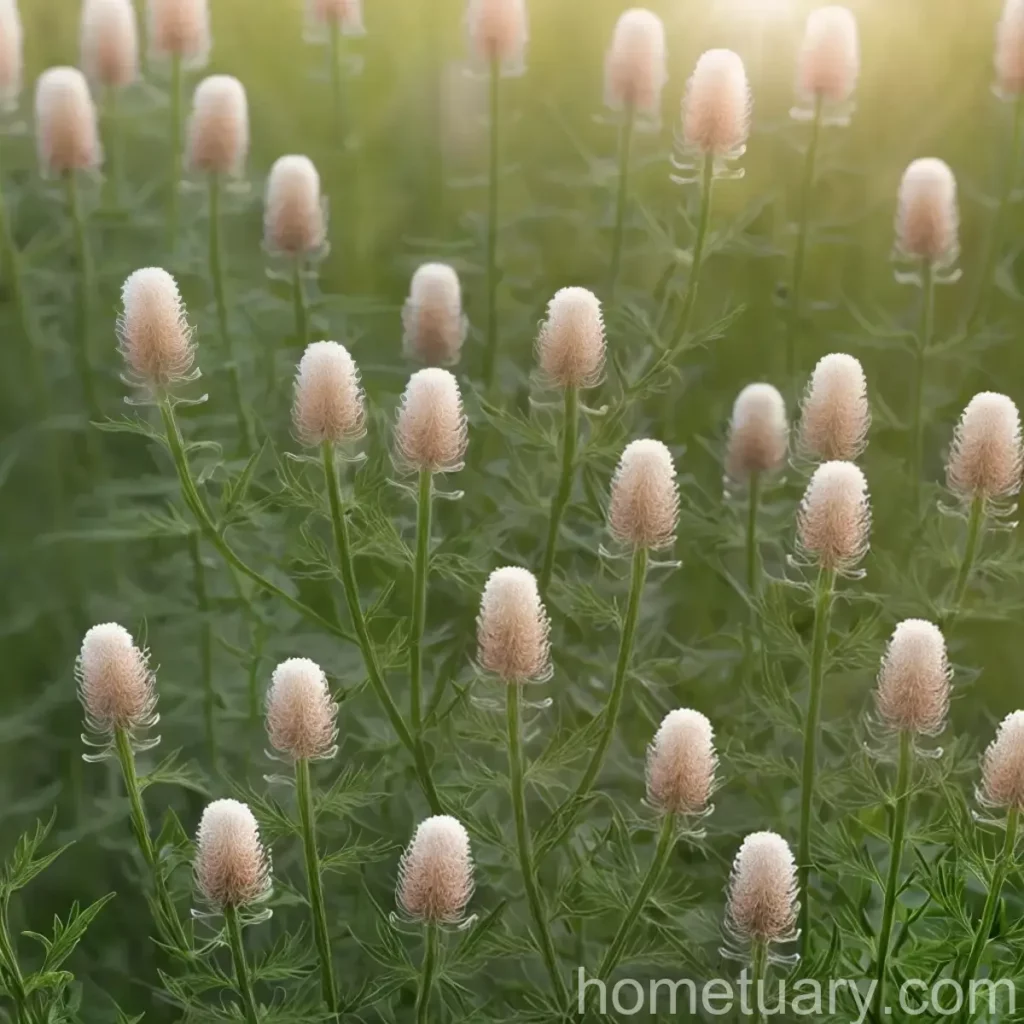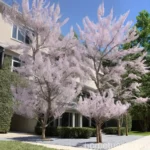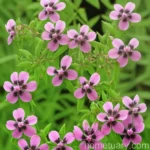The White Prairie Clover (Dalea candida): A Plant Scientist’s Guide
The white prairie clover (Dalea candida) is a beautiful flowering perennial plant that belongs to the legume family, Fabaceae. It is native to North America, where it is valued for its ecological importance and ornamental appeal in landscaping. In this comprehensive guide, we will delve into the fascinating world of (Dalea candida), exploring its cultural requirements, uses, ecological significance, and more.
What is the White Prairie Clover (Dalea candida)?
The white prairie clover, also known as white prairie clover or tall white prairie clover, is a herbaceous plant characterized by its striking white flowers and feathery foliage. This native perennial can be found in a variety of habitats, from open prairies and meadows to roadsides and disturbed areas, where it plays a crucial role in supporting local biodiversity and ecosystem health.
Key Takeaways – White Prairie Clover (Dalea candida)
-
Native White Prairie Clover: The white prairie clover is native to North America and is particularly prevalent in the central and western regions of the continent.
-
Dalea candida Plant: Its botanical name is Dalea candida, and it is a member of the legume family, Fabaceae.
-
White Prairie Clover Facts: It is renowned for its white, cone-shaped flower clusters and its ability to thrive in diverse environmental conditions.
-
Growing Dalea candida: When cultivating Dalea candida, it is essential to consider its cultural requirements, including water, sunlight, soil, and fertilizer needs.
-
Benefits of White Prairie Clover: This plant offers numerous ecological benefits, such as nitrogen fixation, soil stabilization, and wildlife habitat provision.
-
Dalea candida Care: Proper care involves regular watering, sufficient sunlight, and periodic pruning to maintain its health and vigor.
-
White Prairie Clover Habitat: Dalea candida is well adapted to a range of habitats, from dry prairies to more mesic grasslands.
-
White Prairie Clover Uses: It has diverse uses, including ornamental landscaping, ecological restoration, and wildlife forage.
Culture
Cultivating Dalea candida requires an understanding of its specific cultural requirements, including water, sunlight, fertilizer, soil, and pruning needs. Let’s explore each of these aspects in detail.
Water
The white prairie clover exhibits moderate drought tolerance once established, making it suitable for xeriscaping and water-wise gardening. However, during the initial establishment period, regular watering is crucial to support the plant’s root development and overall growth. Adequate moisture levels help the plant thrive, especially in dry, arid climates.
When providing water to Dalea candida, it is important to strike a balance, avoiding both waterlogging and prolonged dry spells. A well-draining soil is essential to prevent waterlogged conditions, which can lead to root rot and other moisture-related issues.
Sunlight
As a native prairie species, Dalea candida thrives in full sunlight and is well adapted to open, sunny environments. When selecting a planting site, it is important to choose a location that receives at least 6-8 hours of direct sunlight per day. Insufficient sunlight can lead to weak growth and reduced flowering.
In regions with intense heat and sunlight, some light afternoon shade can be beneficial to prevent excessive stress on the plant. However, overall, full sun exposure is key to promoting healthy growth and abundant flowering in white prairie clover.
Fertilizer
Soil Nutrient Analysis
Before applying any fertilizer to the soil, it is advisable to conduct a soil nutrient analysis to assess the existing nutrient levels and pH. This analysis helps in determining the specific fertilizer requirements of the white prairie clover and ensures that the soil is optimally balanced for its growth.
Nitrogen Fixation
One notable characteristic of Dalea candida is its ability to fix atmospheric nitrogen with the aid of symbiotic rhizobia bacteria. This natural process reduces the plant’s reliance on external nitrogen fertilization and contributes to soil fertility and health. In fact, Dalea candida is considered a valuable tool in sustainable agricultural and ecological practices due to its nitrogen-fixing abilities.
Soil
As a prairie species, Dalea candida favors well-drained, sandy or loamy soils with a slightly alkaline to neutral pH. It is important to avoid heavy, waterlogged soils, as they can inhibit root development and lead to plant stress. Prior to planting, amending the soil with organic matter such as compost can improve its drainage, fertility, and overall structure.
Soil Moisture
Balancing soil moisture levels is essential in the cultivation of white prairie clover, as overly dry or excessively wet conditions can hinder its growth. For container-grown plants, using a well-draining potting mix is crucial in preventing waterlogging and maintaining an optimal moisture balance.
Pruning
Periodic pruning can help maintain the shape, health, and flowering performance of Dalea candida. After the initial flowering period, deadheading the spent blooms can encourage the plant to produce additional flowers and prolong the blooming season. Additionally, removing any damaged or diseased foliage helps prevent the spread of diseases and maintains the plant’s vigor.
Proper pruning practices also involve periodic thinning to improve air circulation and reduce overcrowding, which can contribute to disease incidence. However, it is important to avoid excessive or untimely pruning, as this can stress the plant and diminish its overall health.
Propagation
Seed Propagation
Propagation of Dalea candida can be achieved through both seeds and vegetative means. When propagating from seeds, it is beneficial to scarify the seed coat to enhance germination. Scarification involves nicking or scratching the seed coat to promote water absorption, which can lead to quicker and more uniform germination.
Transplanting Seedlings
Transplanting young seedlings into the garden or larger containers should be done carefully to minimize root disturbance. Adequate soil moisture and protection from direct sunlight during the initial transplanting phase are important for the seedlings’ survival and establishment.
Vegetative Propagation
In addition to seed propagation, Dalea candida can be propagated vegetatively through division or stem cuttings. Dividing established clumps or taking cuttings from healthy, mature plants can yield identical offspring for propagation purposes.
Container Popularity
Dalea candida is well suited to container cultivation, making it a popular choice for urban and small-space gardening. Its adaptability to container growth allows gardening enthusiasts to enjoy its beauty and ecological benefits, even in limited outdoor spaces or on balconies and patios.
When growing Dalea candida in containers, it is important to select a pot that provides adequate room for root development and drainage holes to prevent waterlogging. Regular monitoring of soil moisture and nutrient levels is crucial for container-grown plants to ensure optimal growing conditions.
Uses
Ecological Significance
The white prairie clover (Dalea candida) holds significant ecological value, particularly in its native habitats. Its nitrogen-fixing abilities contribute to soil fertility and health, enriching the surrounding ecosystem. Moreover, its flowers serve as a crucial nectar source for pollinators, including bees, butterflies, and other beneficial insects.
Ornamental Landscaping
Dalea candida is prized for its ornamental appeal, characterized by its abundant white flowers and fine-textured foliage. It is often incorporated into native plant and prairie gardens, where it adds color, texture, and ecological functionality. Additionally, its adaptability to a range of soil types and moisture conditions makes it a versatile choice for landscaping projects.
Wildlife Habitat
The white prairie clover provides important forage for various wildlife species, including deer, rabbits, and small mammals. Its ability to attract pollinators and beneficial insects further enhances its role in supporting local biodiversity and ecological balance.
Ecological Restoration
In conservation and ecological restoration efforts, Dalea candida is frequently utilized to enhance and stabilize natural habitats. Its role in soil erosion control, wildlife habitat provision, and overall ecosystem health makes it a valuable asset in restoration projects, particularly in regions where native prairie ecosystems have been disrupted or degraded.
Common Diseases
Disease Diagnosis
When cultivating Dalea candida, it is essential to monitor the plant for signs of common diseases and address any issues promptly to maintain its health. Some of the diseases that may affect white prairie clover include:
Root Rot
Root rot, often caused by soil-borne fungi, can pose a threat to the plant, particularly in poorly drained or waterlogged soils. Symptoms of root rot include wilting, yellowing foliage, and stunted growth. Improving soil drainage and avoiding overwatering can help prevent this disease.
Powdery Mildew
Powdery mildew is a common fungal disease that manifests as a powdery white coating on the plant’s leaves and stems. It thrives in high humidity and can weaken the plant over time. Regular inspection and the use of fungicidal treatments can help manage powdery mildew infestations.
Leaf Spot
Leaf spot diseases can cause unsightly blemishes on the foliage of Dalea candida. These fungal infections can lead to leaf discoloration, spots, and eventual defoliation if left unchecked. Pruning affected plant parts and improving air circulation can aid in disease prevention.
Common Pests
Botanist’s Tips
Effective pest management is essential for maintaining the health and vigor of Dalea candida. When encountering pest issues, it is important to consider integrated pest management (IPM) strategies, which emphasize the use of cultural, biological, and least-toxic control methods.
Aphids
Aphids can infest the tender growing tips and undersides of leaves, feeding on plant sap and secreting honeydew. Regularly inspecting the plant and using insecticidal soaps or horticultural oils can help manage aphid populations.
Spider Mites
Spider mites are common pests that can cause stippling and webbing on plant leaves. Regularly spraying the plant with water and maintaining adequate humidity levels can deter spider mite infestations.
Caterpillars
Caterpillars, particularly those of certain butterfly species, can feed on the foliage of Dalea candida. Handpicking caterpillars and employing natural predators, such as beneficial insects and birds, can aid in controlling caterpillar populations.
Fun Facts
Nitrogen Fixation
Dalea candida plays a vital role in the process of nitrogen fixation, where it forms a symbiotic relationship with nitrogen-fixing bacteria. This ecological mechanism contributes to soil fertility and reduces the plant’s demand for external nitrogen inputs.
Links to External Resources
To further explore the world of Dalea candida and its ecological, cultural, and horticultural significance, the following external resources are recommended:
- USDA Plant Guide: White Prairie Clover
- Lady Bird Johnson Wildflower Center: Dalea candida
- North American Native Plant Society: Dalea candida
- Wild Ones: White Prairie Clover
- Xerces Society: Pollinator Conservation Resource Center
In conclusion, the white prairie clover (Dalea candida) is a remarkable native plant with ecological, ornamental, and horticultural significance. Its adaptability, aesthetic appeal, and ecological capabilities make it a valuable addition to landscapes, natural habitats, and conservation initiatives. By understanding its cultural requirements, uses, and ecological role, we can appreciate and promote the importance of this native perennial in supporting biodiversity and sustainable gardening practices.
Keywords:
Native white prairie clover, Dalea candida plant, White prairie clover facts, Growing Dalea candida, Benefits of white prairie clover, Dalea candida care, White prairie clover habitat, White prairie clover uses, Dalea candida flowers, How to cultivate white prairie clover, White prairie clover medicinal properties, Dalea candida gardening, White prairie clover species, White prairie clover planting tips, Dalea candida cultivation, White prairie clover symbolism, Dalea candida native range, White prairie clover adaptations, White prairie clover nutrition, Dalea candida wildlife value, White prairie clover seeds, Dalea candida perennial plant, White prairie clover leaves, White prairie clover ecology, Dalea candida flowering period, White prairie clover soil requirements, Dalea candida pollinators, White prairie clover for landscaping, Dalea candida wildlife attractant, White prairie clover drought tolerance, Dalea candida root system, White prairie clover seed germination, White prairie clover seedling care, Dalea candida nectar source, White prairie clover for pollinators, Dalea candida garden benefits, White prairie clover bee plant, White prairie clover companion planting, Dalea candida conservation, White prairie clover natural habitat, White prairie clover erosion control, Dalea candida reproductive cycle, White prairie clover nitrogen fixation, White prairie clover forage value, Dalea candida wildlife habitat, White prairie clover for wildlife gardens, Dalea candida plant profile, White prairie clover conservation status, White prairie clover bee-friendly plant, Dalea candida plant uses















